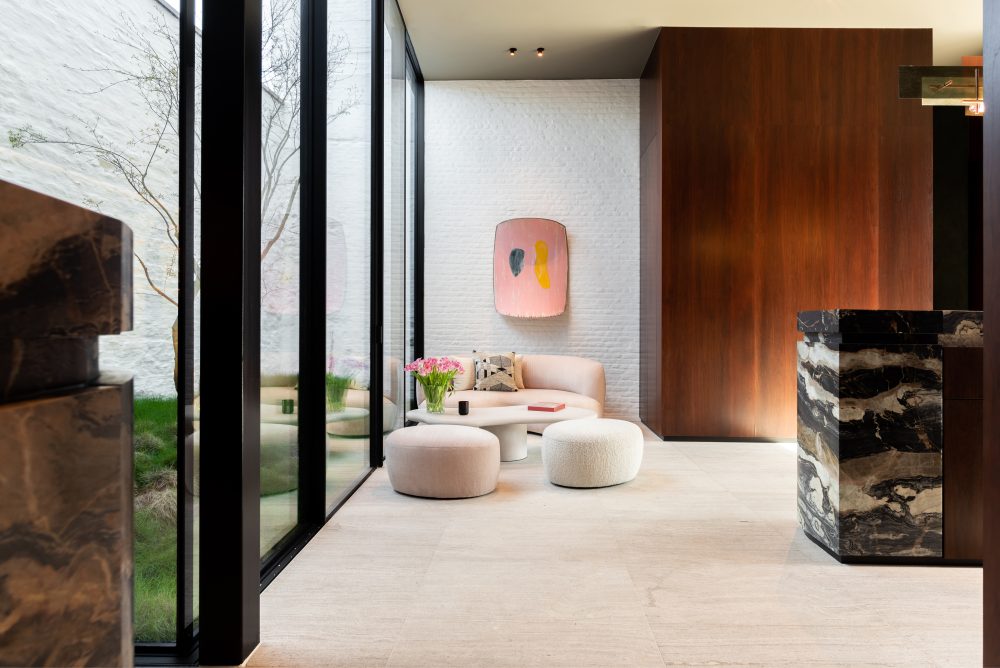
MGS together with Dr House at B-CAD Rome 2025
From 19 to 21 September 2025, MGS – Marble & Granite Service will be present at the B-CAD Rome (Building,
MGS Italy: passion for natural stone, knowledge of quarries and materials, and years of experience in the main international markets.
Explore our materials library or discover the slabs ready for immediate availability in our online stock.
MGS can manage every aspect of a project involving natural stone, from material selection and supply (blocks, slabs, tiles, cut-to-size) to quality control, on-site measurement, design (supported by the expertise of our dedicated technical office), installation, and surface treatment before and after installation.
+ 34 county
+120 quarry
A continuous search for materials.
The United States, Canada, South America, Switzerland, Netherlands, England, Ireland, Sweden, Russia, India, China, Azerbaijan. MGS exports and manages projects in Italy and around the world, with 80% of our clients located outside of Italy.
In 2010, driven by the desire to get closer to our major clients and their needs, CEO Francesco Farina established MGS USA Inc., based in Phoenix, Arizona, where he opened the Galleria of Stone AZ, a showroom filled with carefully selected materials and skilled, well-trained staff. A stone gem just a few miles from the Arizona desert.
We offer customer-tailored services, covering every phase of the project: from supplying raw stone slabs to designing and creating cladding, shower trays, kitchen countertops, and tables.
Our cuctomer are: private individuals, contractors, builders, stonemasons, architects, and interior designers. Starting from your specific needs and requirements, we tailor our services to meet the most varied requests, backed by solid partnerships and boldly pushing beyond the standard offerings in the natural stone market.

From 19 to 21 September 2025, MGS – Marble & Granite Service will be present at the B-CAD Rome (Building,


MGS – Marble & Granite Service S.r.l.
Via Napoleone 11 – Fraz. Ponton
37015 – S.Ambrogio V.lla (VR)
Phone: + 39 0456886224
Fax: 0456861227
P.IVA: 03233250236
C:F: 03233250236
Rea: 319401
Mail: info@marbleandgraniteservice.com
Sales Manager Italy
Mr. Karl Van Grinsven
Sales Manager Australia
Mr Luca Ceschinelli
Mrs Francesca Falcone
francesca.falcone@marbleandgraniteservice.com
luca.ceschinelli@marbleandgraniteservice.com
Sales Manager
East Coast Usa and Canada
Mr Corrado Caraffi
Rep. West Coast Usa
Mrs Katia Ghioni
Mr Attilio Caprini
“The Italian Stone Botique” – by MGS, Italy
750 E.Covey Lane #145
Phoenix, Arizona 85024
Mr. Guy Stewart
Mr. Carlos Santos
Phone: +1 (602) 354-3229
Mobile: +1 (480) 334-1549
info@galleriaofstoneaz.com
www.galleriaofstoneaz.com
© 2019 Marble and Granite Service S.r.l. | Contact us
Capitale sociale €20.800 int. versato R.E.A. | VR 319401 | P.iva IT03233250236 • Made by WEBKOLM
Privacy Settings
This website uses cookies to improve your experience while you navigate through the website.
View the Cookie Policy View the Personal Data Policy
Google Tag Manager is a tag management service provided by Google Ireland Limited. The data sent is collected for the purposes of personalizing the experience and statistical tracking. You can find more information on the "More information on Google's handling of personal information" page.
Place of processing: Ireland - Privacy Policy
Additional consents:
Calendly widget is a calendar content visualisation service provided by Calendly, LLC that allows this Website to incorporate content of this kind on its pages.
Place of processing: United States - Privacy Policy
Google reCAPTCHA is a SPAM protection service provided by Google Ireland Limited.
The use of reCAPTCHA is subject to the Google privacy policy and terms of use.
Place of processing: Ireland - Privacy Policy
Google Analytics is a web analytics service provided by Google Ireland Limited ("Google"). Google uses the collected personal data to track and examine the usage of this website, compile reports on its activities, and share them with other Google services. Google may use your personal data to contextualize and personalize the ads of its advertising network. This integration of Google Analytics anonymizes your IP address. The data sent is collected for the purposes of personalizing the experience and statistical tracking. You can find more information on the "More information on Google's handling of personal information" page.
Place of processing: Ireland - Privacy Policy
Facebook Remarketing is a Remarketing and Behavioral Targeting service provided by Facebook Ireland Ltd. This service is used to link the activity of this website with the Facebook advertising network.
Place of processing: Ireland - Privacy Policy
LinkedIn conversion tracking (LinkedIn Insight Tag) is an analytics and behavioural targeting service provided by LinkedIn Corporation that connects data from the LinkedIn advertising network with actions performed on this Website.
Place of processing: United States - Privacy Policy
Pinterest Conversion Tag is an analytics service provided by Pinterest, Inc. that connects data from the Pinterest advertising network with actions performed on this Website.
Place of processing: United States - Privacy Policy